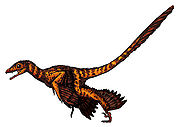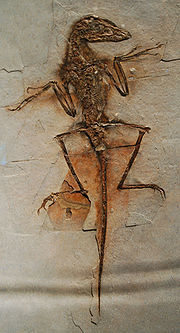Could Jurassic Park have been right?: Venomous Dinos
 65 million years ago one of the most amazing and dynamic groups of organisms vanished from our planet, the Dinosaurs. All that remains are fossil records with gaping holes and missing data.
65 million years ago one of the most amazing and dynamic groups of organisms vanished from our planet, the Dinosaurs. All that remains are fossil records with gaping holes and missing data.
Only recently has science began to unveil some of the mysteries of these behemoths. For decades it was believed that ancient DNA, proteins, and soft tissue could not be preserved over millions of years. Now, during the last 2 years, soft tissue was discovered deep inside the thigh bones of T-Rex.
There are times that inspiration for truth comes from science fiction, such as the best selling novel and blockbuster film, “Jurassic Park.” The film took some artistic liberty with their dinosaurian profiles. One of the most noticed was giving a carnivorous dinosaur known as Dilophosaurus a special skill – the ability to spit toxic venom.
According to their fossils, there was no evidence for venom production in this type of dinosaur. In fact to most paleontologists this idea was laughable. Today venomous dinosaurs might not be so funny.
A fossil of a small dinosaur called sinornithosaurus (a chicken-sized dinosaur) was discovered in China about 9 years ago. This species existed in the mid-Jurassic (about 124 million years ago). This find caused a sensation because it had clear evidence of feathering. In 2009 a research team studied the skull of this animal intensively and made an interesting discovery. They found mysterious air pockets located above many of the teeth. These “pockets” connected to grooves in the dinosaurs teeth that spanned from the base of the tooth to the tip. This would be the perfect mechanism for a venomous bite. Even though this new theory is controversial, it is a logical explanation.

If these little dinosaurs were poisonous, it may be impossible to tell anything about the venom itself. There would be no trace of it left after about 124 million years. The answer lies within their DNA. There is an unbearably slim chance of finding any soft tissue remaining in such a small fossil. This is always the problem for every paleontologist, we just have to take what we can get, and go as far as we can go – and hope for answers along the way.
For more information on this new discovery go to:
http://www.sciencenews.org/view/generic/id/51402/title/Groovy_teeth_suggest_dinosaur_was_venomous
| Print article | This entry was posted by Elna Carrasco on January 28, 2010 at 4:24 pm, and is filed under DNA Interactive. Follow any responses to this post through RSS 2.0. You can skip to the end and leave a response. Pinging is currently not allowed. |









